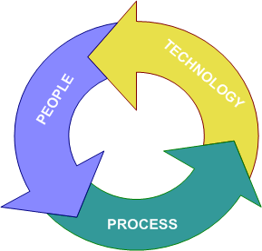Table of Contents
Disaster
A “Disaster” is any event that can cause a significant disruption in operational processing capabilities for a period of time, which affects the operations of the business.
Disaster may exist when:-
- A service providing support to a critical business function fails.
- It is determined the service cannot be restored before the point it becomes vital to the business
Disasters can be Natural or Man Made
Natural disaster : A natural disaster is a major adverse event resulting from the earth’s natural hazards. Examples of natural disasters are Floods, Tsunamis, Cyclones, Volcanic Eruptions, Earthquakes, Landslides etc.
Every Business required a way to come up from any disaster/failure to continue their regular business without more loss
Man Made disaster: Man-made disasters could be intentional (for example, sabotage or an act of terrorism) or unintentional (that is, accidental, such as the breakage of a man-made dam).
Recovery
A “Recovery” is the process of bringing a business, organization, community back to “normal”, or how it was before disaster.
Disaster recovery is the process, policies and procedures related to preparing for recovery or continuation of technology infrastructure critical to an organization after a Natural or human – induced. Disaster recovery is a subset of Business Continuity
Different Recovery Goals:
- Reduce or avoid losses from hazards
- Assure prompt assistance to disaster affected assets
- Achieve rapid and effective recovery
Every Business required a way to come up from any disaster/failure to continue their regular business without more loss.
Disaster Recovery Plan
Recovery measures are steps or mechanisms that can reduce or eliminate various threats for organizations. Different types of measures can be included in disaster recovery plan.
Disaster recovery planning (DRP) is a subset of a larger process known as Business Continuity Planning.
Business Continuity Planning (BCP)
- Proactive planning to operate at minimum acceptable loss
- Ensure the continuity of critical business functions (process, people & technology) in the event of a disaster
- Sum up BCP is a statement of
- Actions to be taken,
- Resources to be used,
- Procedures to be followed
- Before , During & After a disaster

BCP Approach
Reduce: The period of time before the disaster.
Respond: The hours and days immediately follow the disaster.
Recover: The period from the occurrence of the disaster until temporary operations or alternative processing are executed.
Resume: The time whereby business functions and operations are resumed at alternate site
Restore: The restoration of non-critical functions and damaged infrastructures.
Return: The time when operations return to normal.
Disaster Recovery Plan (DRP)
- Disaster recovery plan would define process, policies and procedures of regaining access to
- Records
- Data
- Hardware and software necessary
to resume critical IT process
- DRP is subset of BCP specific to Information System
- IT disaster recovery control measures can be classified into the following three types:
- Preventive measures – Controls aimed at preventing an event from occurring.
- Detective measures – Controls aimed at detecting or discovering unwanted events.
- Corrective measures – Controls aimed at correcting or restoring the system after a disaster or an event.
Benefits of Disaster Recovery Plan
There are some benefits that can be obtained from the drafting of a disaster recovery plan. Some of these benefits are:
- Providing a sense of security
- Minimizing risk of delays
- Guaranteeing the reliability of standby systems
- Providing a standard for testing the plan
- Minimizing decision-making during a disaster
- Reducing potential legal liabilities
- Lowering unnecessarily stressful work environment
Disaster Recovery Example
| Disaster Type | Example | Profile | First Response |
| Natural | Earthquake | The shaking of the earth’s crust, caused by underground volcanic forces of breaking and shifting rock beneath the earth’s surface | Shut off utilities; Evacuate building if necessary; Determine impact on the equipment and facilities and any disruption |
| Flood | Flash flooding: Small creeks, gullies, dry streambeds, ravines, culverts or even low lying areas flood quickly | Monitor flood advisories; Determine flood potential to facilities; Pre-stage emergency power generating equipment; Assess damage | |
| Freezing Rain | Rain occurring when outside surface temperature is below freezing | Monitor weather advisories; Notify employees of business closure; home; Arrange for snow and ice removal | |
| Lightening Strike | An electrical discharge caused by lightning, typically during thunderstorms | Power off all equipment; listen to hurricane advisories; Evacuate area, if flooding is possible; Check gas, water and electrical lines for damage; Do not use telephones, in the event of severe lightning; | |
| Volcanic eruption | The release of hot magma, volcanic ash and/or gases from a volcano | Determine impact on the equipment and facilities and any disruption | |
| Man made | Civil Unrest | A disturbance caused by People | Contact local police or law enforcement |
| Nuclear and Radiation Accidents | An event involving significant release of radioactivity to the environment and which leads to major undesirable consequences to people & the environment | Establish an overview of the affected area. Provide and obtain regular updates to and from first responders | |
| Power Failure | Caused by summer or winter storms, lightning or construction equipment digging in the wrong location | Wait 5–10 minutes; Power-off all Servers after a graceful shutdown; Do not use telephones ; Shut down main electric circuit usually located in the basement or the first floor |



How to Hire an Electrician